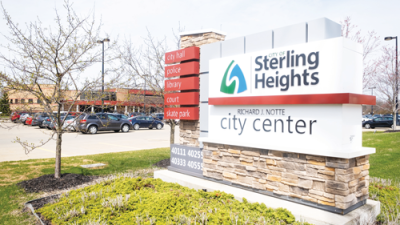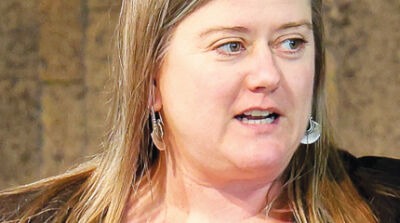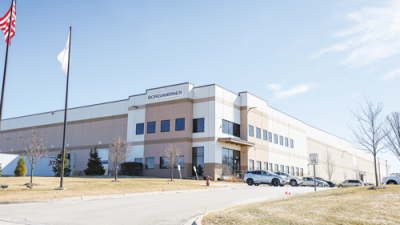STERLING HEIGHTS — As the Southeast Michigan Council of Governments gazes more than 25 years into the future, it foresees some challenges alongside growth for Sterling Heights, Macomb County and the broader region.
During the July 18 Sterling Heights City Council meeting, SEMCOG forecast coordinator Jeff Nutting presented his organization’s regional development forecast. He said SEMCOG researches and compiles its estimates in order to understand the future and accurately plan for the region’s infrastructure needs.
Nutting first discussed the 2050 forecast for the southeast Michigan area, comprising seven counties, including Macomb. For instance, the region’s population could rise by 6.4%, jobs could increase by 9% and the labor force could grow by 7%, he said. He connected an aging population to the chances for a labor shortage, especially if fewer immigrants come to the state.
Among other southeastern Michigan metrics, Nutting said, the area will face a declining school-age population when compared to 2022, and seniors ages 65 and older are expected to outnumber minors by the year 2028.
“That is going to be a challenge, specifically for our school districts’ facility planning,” he said.
In terms of the region’s employment sectors, health care and social assistance should increase the most, followed by professional and technical services, he said. He said the manufacturing and retail trade sectors are expected to decline. Transportation and warehousing, as well as construction, are expected to see smaller increases, he added.
In terms of Macomb County, Nutting said SEMCOG expects the county from 2020 to 2050 to grow its population by 9.2% and its employment by 6.7%. But while industries like professional and technical services (22.7%), health care (28%), and transportation and utilities (34.2%) are expected to have significant growth, other sectors, like manufacturing (-10.4%) and retail trade (-22.7%) are expected to recede, he said.
In the particular case of Sterling Heights, he said the city can expect “slight but steady growth” up until 2050. He said the city could increase its population by 7% but face a 6% decline in children. He added that households that have children will decrease by 5%, while households without children will increase by around 15% and households with seniors will increase by around 40%.
“I think that sort of clearly illustrates that the majority of the (population) growth that we’ll see in our region is going to be seniors aging in place,” he said.
Nutting said the total projected increase for jobs in Sterling Heights is 1.5%, which he said could include growth in construction, transportation, health care, and professional and technical services — but declines in manufacturing and retail trade.
“So in the immediate future, it’s about balancing job gains from the sectors that are growing versus attempting to mitigate jobs lost from those sectors that are in decline,” he said.
Nutting attributed the predicted decline of manufacturing to electric vehicles requiring “half the parts, half the labor, half the jobs (and) half the suppliers.” He explained that the employment sector forecasts are based on an estimate that “we will reach 50% electric vehicles in the year 2050.” He added that manufacturing job losses could increase or decrease depending on whether that target is reached early or late.
Sterling Heights City Manager Mark Vanderpool said the SEMCOG data are welcome as the city and its stakeholders embark on forming their Visioning 2040 plan. He said some of the data are positive, while some of the results are concerning, but it’s all welcome knowledge.
“As part of that process, we want to make sure we have good data as we look ahead, and especially with respect to demographic data,” Vanderpool said.
Vanderpool said one challenge the Visioning 2040 plan will need to engage is how to keep and grow available jobs within its boundaries, including manufacturing.
“We have significant manufacturing jobs in the city. Even though manufacturing is projected to decline, it’s alive and well in Sterling Heights,” Vanderpool said.
“So the challenge for us as a community is, how do we continue to ensure that those employers: Stellantis, Ford, General Dynamics Land Systems, BAE and the like — and all the suppliers — continue to invest here in Sterling Heights and not elsewhere.”
Find out more about SEMCOG by visiting semcog.org.
 Publication select ▼
Publication select ▼



























